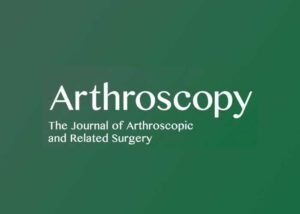
Knotted Transosseous-Equivalent Technique for Rotator Cuff Repair Shows Superior Biomechanical Properties Compared With a Knotless Technique: A Systematic Review and Meta-analysis
Authors:
Jeremy Ansah-Twum, B.A., John W. Belk, B.A., Connor K. Cannizzaro, B.S., Andrew G. Potyk, B.A., Jonathan T. Bravman, M.D., Eric C. McCarty, M.D., Armando F. Vidal,M.D.
Abstract:
Purpose: To compare the biomechanical properties of the knotted versus knotless transosseous-equivalent (TOE) techniques for rotator cuff repair (RCR).
Methods: A systematic review was performed according to the Preferred Reporting Items for Systematic Reviews and Meta-analyses (PRISMA) guidelines using PubMed, Embase, and the Cochrane Library to identify studies that compared the biomechanical properties of knotted and knotless TOE RCR techniques. The search phrase used was as follows: (Double Row) AND (rotator cuff) AND (repair) AND (biomechanical). Evaluated properties included ultimate load to failure, cyclic displacement, stiffness, footprint characteristics, and failure mode.
Results: Eight studies met the inclusion criteria, including a total of 67 specimens in each group. Of 6 studies reporting on ultimate load to failure, 4 found tendons repaired with the knotted TOE technique to experience significantly higher ultimate load to failure compared with knotless TOE repairs (knotted range, 323.5-549.0 N; knotless range, 166.0-416.8 N; P < .05). Of 6 studies reporting on failure stiffness, 2 found knotted TOE repairs to have significantly higher failure stiffness compared with knotless TOE repairs (knotted range, 30.0-241.8 N/mm; knotless range, 28.0-182.5 N/mm; P < .05), whereas 1 study found significantly higher failure stiffness in knotless TOE repairs compared with knotted TOE repairs (P = .039). Cyclic gap formation favored the knotted TOE group in 2 of 3 studies (knotted range, 0.6-5.2 mm; knotless range, 0.4-9.1 mm; P < .05). The most common mode of failure in both groups was suture tendon tear.
Conclusions: On the basis of the included cadaveric studies, rotator cuff tendons repaired via the knotted TOE technique display superior time-zero biomechanical properties, including greater ultimate load to failure, compared with rotator cuffs repaired via the knotless TOE technique. Suture tearing through the tendon remains a common failure method for both techniques.
Clinical relevance: The results of this systematic review provide helpful insight into the biomechanical differences between 2 popular techniques for RCR. Although these results should be carefully considered by surgeons who are using either of these techniques in the operating room, they should not be mistaken for direct clinical applicability because cadaveric studies may not directly correlate to clinical outcomes.
Copyright © 2021 Arthroscopy Association of North America. Published by Elsevier Inc. All rights reserved.
You may purchase a copy of the study from the Arthroscopy Journal site: Knotted Transosseous-Equivalent Technique for Rotator Cuff Repair Shows Superior Biomechanical Properties Compared With a Knotless Technique: A Systematic Review and Meta-analysis